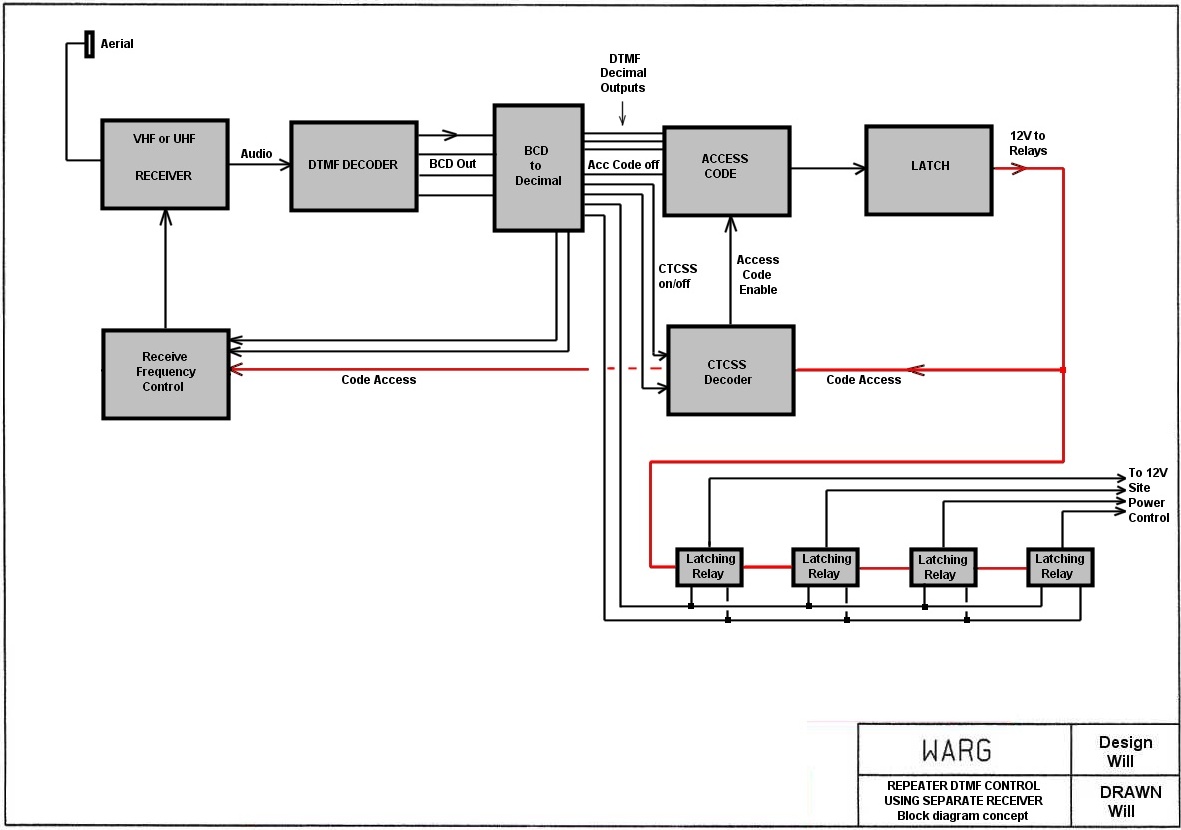Repeater Site Remote Control
Home| Remote control of a repeater site is a
necessity, but it is an added requirement that requires effort and has
to work well. Using the repeater's input is the easy and normal way of
controlling a repeater. DTMF or CTCSS is the simplest way to switch
various functions, but by using the repeater's input, users hear the
control tones. Yes they can be muted out, but it is not the best way to
control the repeater site. Also for those who want to mess up the repeater's operation, by tracking down the DTMF tones, it is not that hard. Some people can even recognise DTMF tones by ear, or use receivers that show the tones as numbers and then cause havoc on the repeater. However there are ways to prevent this from happening. Separate Receiver
Using a separate receiver is more work but
offers many advantages. If those that want to work out the tones, can't
find the tones on air, as they don't know the radio frequency used,
then this makes it really hard for hackers.
CTCSS
CTCSS can also be required to gain access to the DTMF decoder. To access the DTMF control one has to know the required CTCSS tone first. Remote Receiver frequency change
Also the separate receiver's frequency can be remotely changed if the frequency is stumbled on by hackers. The Hamtronics receiver allows for easy frequency change. To summarise....To access the repeater's control functions you have to.. 1. Know the RF frequency to transmit on (VHF or UHF). 2. Use the correct CTCSS tone. 3. Know the correct DTMF control tones. Using the repeaters antenna
It is possible to use the existing
repeater's antenna by tapping into the receive cable between the
duplexer and the existing repeater's receive input. Paralleling two
receivers from one antenna does not work well, as each receiver effects
the sensitivity of the other. However if some isolation is placed
between the two receivers then it can work. What you don't want to
effect is the repeater's receiver, but the control receiver does not
have to be as sensitive as the repeater's receiver. By tapping off from
the receive coax, with a resistor providing about 10dB loss to the
control receiver, using a 220 Ohm resistor, the required isolation can
be achieved without effecting the repeater's receive sensitivity. This
is shown in the diagram below.
No Desensing
Using the same band for the control
receiver, as the repeater, is a problem due to desensing from the
repeater's transmitter into the control receiver. However by tapping
into the repeater's antenna, after the duplexer, and using a frequency
close to the repeater's receive frequency, the
duplexer also has enough isolation for the control receiver not to be
effected by the repeater's transmitter.
|

Block Diagram of interface between separate site control receiver and existing repeater

Block Diagram separate receiver DTMF repeater control concept